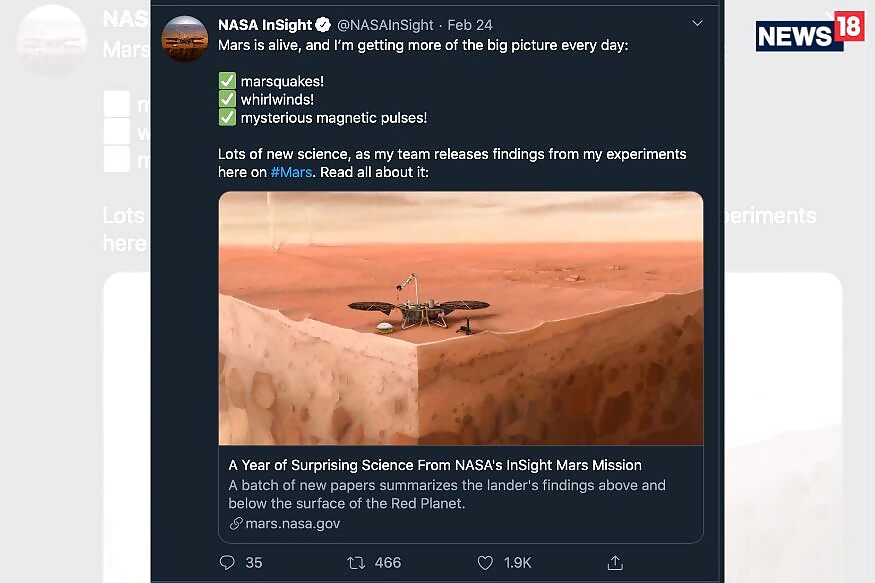
views
If you look at the photos, such as the one above, you would probably think Mars is an unwelcoming, hostile, unpredictable and dry while being completely bereft of life. At least for those who aren’t too enthused by the whole logic about aliens. But we might have to change our perception about Mars and its rather cold personality. The NASA InSight lander mission has completed one year on the planet and it tells us that Mars is more active than ever imagined. In fact, the Seismic Experiment for Interior Structure, or SEIS, has recorded more than 450 seismic activities in this period, and NASA says a vast majority of these are quakes. The most powerful quake recorded was about magnitude 4.0 in size.

In a paper published in Nature Geoscience, scientists say that until September 30, 2019, SEIS counted 174 quakes which included 150 high-frequency and low-magnitude events on the Martian crust while there were 24 higher-magnitude events that were below the crust. They say the high-frequency events that were recorded seem quite similar to those that the Apollo mission measured on the Moon’s surface.
The InSight lander mission has also detected some weirdness with the planet’s magnetic field, which doesn’t exist anymore in the same way it probably did billions of years ago. But there are magnetizing ancient rocks which are now around 200 feet below the surface of Mars. "This magnetism must be coming from ancient rocks underground. We're combining these data with what we know from seismology and geology to understand the magnetized layers below InSight. How strong or deep would they have to be for us to detect this field?” says Catherine Johnson, a planetary scientist at the University of British Columbia and the Planetary Science Institute. The newer rocks and the ones on the surface came much later and haven’t been magnetized by Mars’ earlier field.
Then there is the small matter of the swirling winds, which become visible when they collect grit from the surface and toss it around. “This site has more whirlwinds than any other place we've landed on Mars while carrying weather sensors,” says Aymeric Spiga, an atmospheric scientist at Sorbonne University in Paris.
NASA says the InSight has two radios—one for sending and receiving data while the other one is for measuring the wobble of the planet as it spins. That data will allow scientists to understand whether Mars’ core is solid or liquid. Less wobble would indicate a solid core, compared with a liquid core.
NASA believes that collecting and understanding data over a full Martian year (that would be two years here on earth, you peasants) would give scientists a much better understanding of the red planet. And that whether it has any signs that would indicate it could support life. Don’t pack your bags just yet. A SpaceX mission isn’t going there anytime soon.




















Comments
0 comment